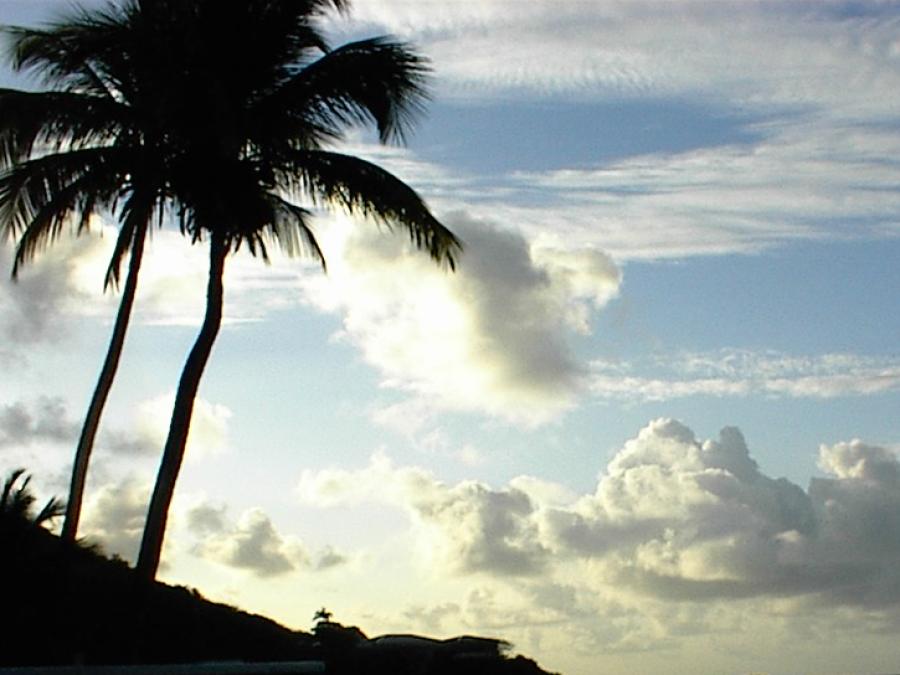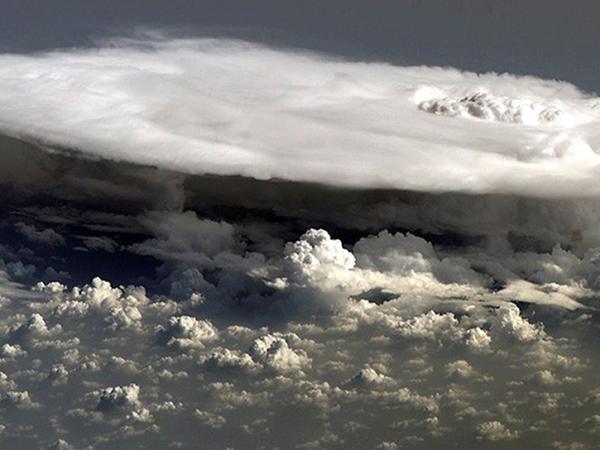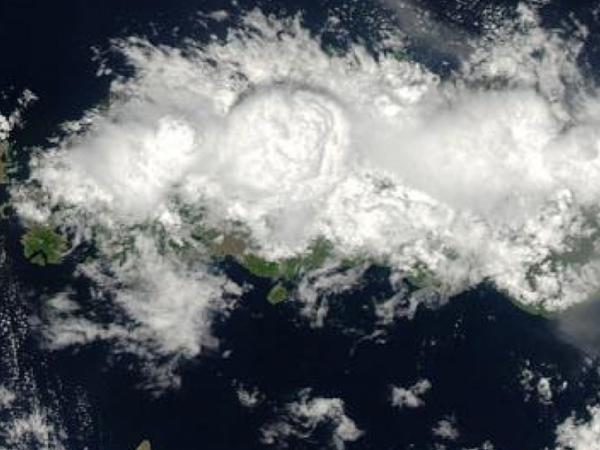Advanced Microwave Precipitation Radiometer (AMPR)
Type: Passive Microwave Radiometer
Principal Investigator: Robbie Hood
Co-Investigators: Daniel Cecil, Frank LaFontaine
Platform NASA ER-2
Temporal Resolution: 50 milliseconds per sample
Spatial Resolution: sampling, 800 meters at 20 km altitude
85.5 GHz, 640 meters at 20 km altitude
Data Volume per Day: approximately 8 MB of raw data and 64 MB of processed data
In-Field Quick Look Products: Brightness Temperatures (TB)
Direct Products: TB data (swath) and imagery (swath and grid)
Derived Products: Precipitation Index
Potential Products: Instantaneous rain rate, inland/coastal surface water mapping
Preferred Aircraft Maneuvers: Straight and level over target areas, clear atmosphere over calm ocean for calibration
Frequency of Maneuvers: At least once per flight
Unfavorable Aircraft Maneuvers: Pitch or roll greater than 2 degrees and pitch or roll rates of greater than .5 degrees per second
Unfavorable Environmental: High output RF sources
Preferred Atmospheric Conditions: Over cloud-free ocean near a radiosonde launch site/time and AMSR-E overpass location/time
Desired Data Sources: radiosonde data sets, passive microwave satellite images, radar images, visible and infrared satellite images
Mission Planning Needs: Internet access
Cloud Radar System (CRS)
Type: Radar
Documentation
Principal Investigator: Gerry Heymsfield
Co-Investigator(s): Lihua Li, Lin Tian, Larry Belcher
Platform: ER-2
Temporal Resolution: 0.5 sec
Spatial Resolution: 0.15 km at surface
Data Volume Per Day: 2.5 GB
In-Field Quick Look Products: Quick-look reflectivity and velocity plots for
selected flight lines.
Direct Products: Reflectivity, Doppler velocity, and spectral width from
nadir and forward beams in Universal Format. Software
readers for IDL will be provided.
Derived Products: Ice content.
Potential Products: Vertical velocities, path attenuation, surface
backscatter
Preferred Aircraft Maneuvers:
Normally, straight and level flights are desired. Special manuevers: a) ER-2 roll (+/- 10 degrees) manuever over water; pitch manuever if possible. b) For calibration purpose, it would be useful to have a back and forth flight over clear ocean and land near buoys. These flights would help detect antenna mounting errors in cross track direction.
Frequency of Maneuvers: About 5 times during experiment.
Unfavorable Aircraft Maneuvers: ER-2: Pitch and roll changes, heading changes
during flight line.
Unfavorable Environmental Conditions: N/A
Preferred Atmospheric Conditions Clear or clouds for hurricanes.
Aircraft to Perform Drop: ER-2
Desired Data Sources: All
Mission Planning Needs: Internet
ER-2 Doppler Radar (EDOP)
Type: Radar
Documentation
Principal Investigator: Gerry Heymsfield
Co-Investigator(s): Lihua Li, Lin Tian, Larry Belcher
Platform: ER-2
Temporal Resolution: 0.5 sec
Spatial Resolution: 1.1 km at surface; ~250 m at 15 km altitude
Data Volume Per Day: 3.5 GB
In-Field Quick Look Products: Quick-look reflectivity and velocity plots for
selected flight lines.
Direct Products: Reflectivity, Doppler velocity, and spectral width from
nadir and forward beams in Universal Format. Software
readers for IDL will be provided.
Derived Products: Rainrate, ice content.
Potential Products: Vertical velocities, rain rate, path attenuation, surface
backscatter
Preferred Aircraft Maneuvers:
Normally, straight and level flights are desired. Special manuevers: a) ER-2 roll (+/- 10 degrees) manuever over water; pitch manuever if possible. b) For calibration purpose, it would be useful to have a back and forth flight over clear ocean and land near buoys. These flights would help detect antenna mounting errors in cross track direction.
Frequency of Maneuvers: About 5 times during experiment.
Unfavorable Aircraft Maneuvers: ER-2: Pitch and roll changes, heading changes
during flight line.
Unfavorable Environmental Conditions: N/A
Preferred Atmospheric Conditions Clear or clouds for hurricanes.
Aircraft to Perform Drop: ER-2
Desired Data Sources: All
Mission Planning Needs: Internet
High Altitude MMIC Sounding Radiometer (HAMSR)
Type: Radiometer
Principal Investigator: Bjorn Lambrigtsen
Co-Investigator(s): Alan Tanner, Evan Fishbein, Eric Fetzer
Platform: ER-2
Temporal Resolution: 1.1 sec
Spatial Resolution: 6 deg IFOV, 3 deg. sample cell (2 km, 1km, at
nadir from 20 km)
Data Volume Per Day: Raw data: up to 200 MB (24.5 MB/hour)
Processed data: ~25 MB
In-Field Quick Look Products: Preliminary calibrated brightness temperatures
Direct Products: Definitive calibrated brightness temperatures
Derived Products: a) temperature profiles b) humidity profiles
Potential Products: a) liquid water profiles b) scattering parameters c) rain rates
Preferred Aircraft Maneuvers:
a) Banking maneuver to each side and/or 180/360 degree turn (for repeat look at same air mass from opposite scan sides). Prefer simple atmosphere & surface (calm ocean) b) Level circle over radiosonde release sites; clear sky preferred. (If second opportunity: prefer cloudy case.) c) Exact repeat track over land after land-fall missions; near-clear sky preferred
Frequency of Maneuvers: a) 1-2 times during TCSP, near end middle/end
preferred
b) 1-2 times during TCSP
c) Once, covering all major over-land mission tracks
Unfavorable Aircraft Maneuvers: Rapid pitch or roll maneuvers, steep descents
Unfavorable Environmental Conditions: Turbulence
Preferred Atmospheric Conditions N/A
Desired Data Sources: a) radiosondes
b) surface temperature & sea state
c) high resolution GCM forecast/analysis
d) Aqua AIRS and AMSR-E (observations and retrievals)
e) NOAA-16/17 AMSU-A/B (observations and retrievals)
f) GOES images
Mission Planning Needs: Internet access
Lightning Instrument Package (LIP-ER-2)
Type: Electric Field Mills, Conductivity Probe
Principal Investigator: Richard Blakeslee
Co-Investigator(s): Monte Bateman, Doug Mach
Platform: ER-2
Temporal Resolution: 10 Hz
Spatial Resolution: ~20m
Data Volume Per Day: 30-50 MB
In-Field Quick Look Products: Quick looks at atmospheric conductivity, electric
field components, and aircraft charge
Direct Products: Atmospheric conductivity, electric field components, and
aircraft charge
Derived Products: Total lightning count & rates; lightning statistics; storm
current output, storm charge structure
Potential Products: Quantified lightning related with precipitation, convective
mass/ice flux, latent heat, storm current output
Preferred Aircraft Maneuvers:
Frequency of Maneuvers: 10 minutes each once during the experiment
Unfavorable Aircraft Maneuvers:
Unfavorable Environmental Conditions:
Dropsondes Requested Per Mission: N/A
Preferred Atmospheric Conditions N/A
Aircraft to Perform Drop: N/A
Desired Data Sources: Passive microwave, aircraft Radar, in-situ
Microphysics (NOAA P3s), TRMM
observations, ground-based lighting (Costa
Rican and long-range NLDN
Mission Planning Needs: Satellite Observation Systems (GOES,
TRMM, AQUA, MODIS, etc.), Long Range
Lightning (NLDN), Costa Rican Lightning
Network data, satellite orbit predictions
Miscellaneous: Real time access via the REVEAL system, Real Time
Weather Display (provide mission decision support)
Microwave Temperature Profiler (MTP-ER-2)
Type: Microwave Radiometer
Principal Investigator: M.J. Mahoney
Platform: ER-2
Temporal Resolution: 10s(ER-2)
Spatial Resolution: 2km
Data Volume Per Day: 1MB
In-Field Quick Look Products: Uncalibrated curtain plots of temperature field
along flight track
Direct Products: Temperature profiles along flight track
Derived Products: Tropopause height, lapse rate at aircraft, theta at
aircraft
Potential Products: Isentrope fields
Preferred Aircraft Maneuvers: Flights over radiosonde launch sites desired. Prefer
shallow bank turns and slow ascent and descent
rates (<1000 feet/min)
Frequency of Maneuvers: Desire radiosondes launch site overpasses as often
as possible
Unfavorable Aircraft Maneuvers: steep banks and rapid ascent or descent
Unfavorable Environmental Conditions: None
Dropsondes Requested Per Mission: Will take whatever is provided
Preferred Atmospheric Conditions Clear air
Aircraft to Perform Drop: ER-2
Desired Data Sources: sondes
Mission Planning Needs: Internet access
MODIS Airborne Simulator (MAS)
Type: Imaging Spectrometer
Principal Investigator: Jeff Myers
Co-Investigator(s): Roseanne Dominguez
Platform: ER-2
Temporal Resolution: Data collected continuously at 6.25 scans per second during ER-2 flight (at altitude)
Spatial Resolution: 50 meter pixels at nadir at 15 km altitude Swath width is 36 Km.
Data Volume Per Day: 5-10 Gb per flight
In-Field Quick Look Products:
Quick-look (Level-0) JPEG images of straight and level flight line tracks. Text file of Nadir brightness temperature and radiance for selected bands
Direct Products:
Level-1B multispectral visible and infrared imagery calibrated to at-sensor radiance.
Derived Products: To be determined
Potential Products: To be determined
Preferred Aircraft Maneuvers: Normally, straight and level flights are desired.
Frequency of Maneuvers: N/A
Unfavorable Aircraft Maneuvers: N/A
Unfavorable Environmental Conditions: N/A
Dropsondes Requested Per Mission: N/A
Preferred Atmospheric Conditions Clear or clouds for hurricanes.
Aircraft to Perform Drop: N/A
Internet access: Required for field workstations & posting quick look products
Research Environment for Vehicle-Embedded Analysis on Linux (REVEAL)
Type: Generic Instrument Interface and Investigator support package
Principal Investigator: Lawrence C. Freudinger
Co-Investigator: Carl E. Sorenson
Platform: ER-2
Temporal Resolution: Multiple products simultaneously at different rates (typically 10 Hz, 1Hz, & 0.1Hz process rates)
In-Field Quick Look Products: Quick looks at vehicle sate, fuel temperature monitoring, various environmental parameters.
Direct Products: vehicle data bus interfaces, vehicle time-space-position information, sun angle calculations, and custom real-time and post-flight data products. Provides real-time data feeds to LIP displays and TCSP Team.
Potential Products: Generic instrument interface for vehicle state data and onboard compute services. Disruption tolerant gateway for managing multiple data links; on-board recorder service; dynamically configurable on-board computing; Sensor Web development and support.
Preferred Aircraft maneuvers & Atmospheric Conditions: Not Applicable
Mission Planning Needs: Reliable Internet access for field deployment team; Time between flights to download post-flight data products.
Miscellaneous: Providing real-time and post-flight mission support items for TCSP as part of research objective.
Ticosonde-Aura/TCSP 2005 Project
Radiosonde Program
Type: Atmospheric balloon soundings
Documentation
Principal Investigators: Henry Selkirk (BAER Institute)
Co-Investigator(s): Grace Peng (Aerospace Corporation); Walter Fernández Rojas (UCR); Paulo Manso and Werner Stolz (IMN); Jorge Andrés Diaz (CENAT); Eladio Zárate (CRRH); Jorge Amador Astua (UCR)
Platform: Vaisala RS92-SGP; 500-g or 350-g meteorological balloons
Temporal Resolution: 4 launches per day; 2-sec resolution
Spatial Resolution: launches at Juan Santamaria International Airport
Data Volume Per Day: < 1 Mb
In-Field Quick Look Products
Direct Products: sounding files
CFH/Ozonesonde Program
Type: Atmospheric balloon soundings
Documentation
Principal Investigators: Holger Vömel (CU)
Co-Investigator(s): Henry Selkirk (BAER Inst.); Juan Valdés Gonzáles and Jessica Valverde Canossa (UNA); Paulo Manso and Werner Stolz (IMN); Jorge Andrés Diaz (CENAT)
Platform: Payload contains University of Colorado Cryogenic Frostpoint Hygrometer (CFH) with ECC ozonesonde along with Vaisala RS92-SGP; 1200-g meteorological balloon
Temporal Resolution: maximum 1 per day
Data Volume Per Day: < 1 Mb
TDL Water Vapor Program
Type: Atmospheric balloon soundings
Documentation
Principal Investigators: Randy May (MayComm Inst., San Dimas, CA)
Co-Investigator(s): Henry Selkirk (BAER Inst.); Holger Vömel (CU); Paulo Manso and Werner Stolz (IMN); Jorge Andrés Diaz (CENAT)
Platform: Instrument measures water vapor with a tunable diode laser (TDL); 1000-g meteorological balloon
Temporal Resolution: maximum 1 per day; total of 5 during the project
Data Volume Per Day: < 1 Mb


